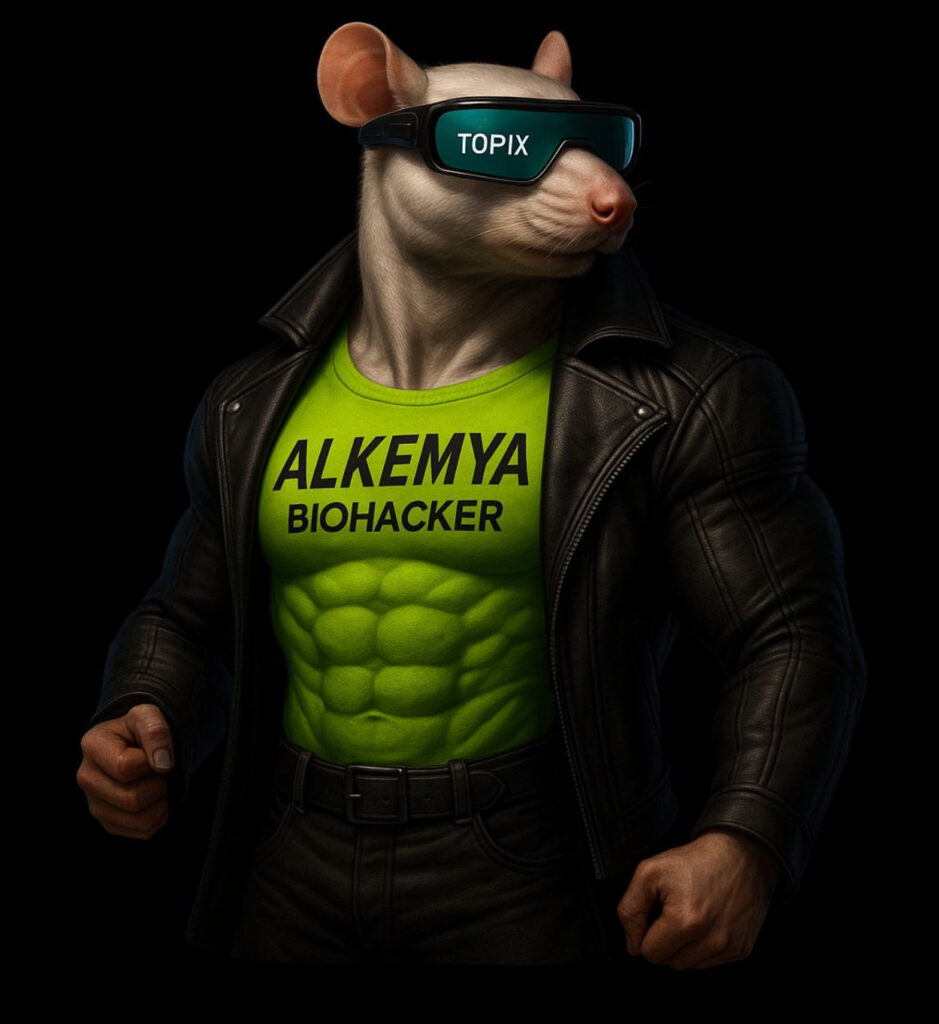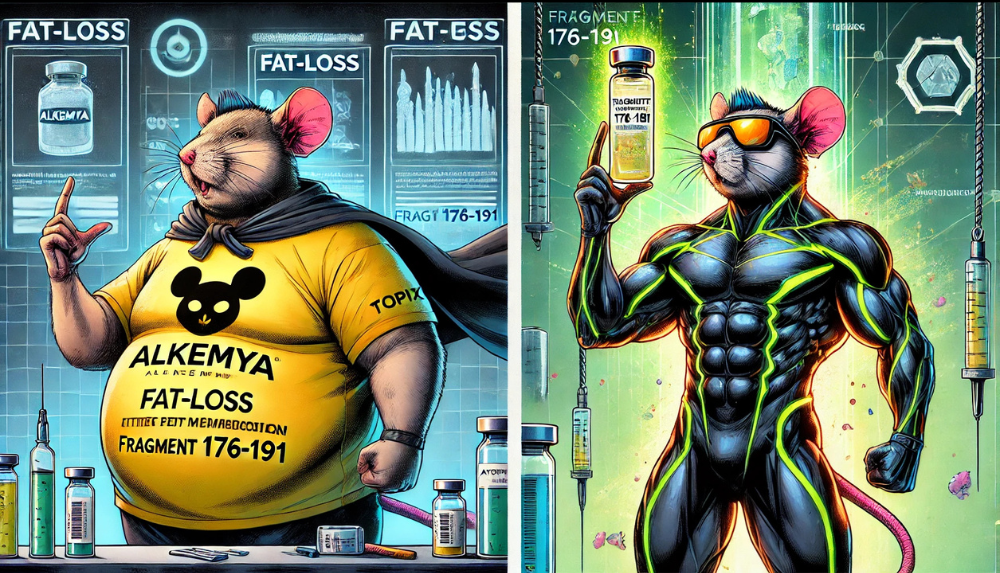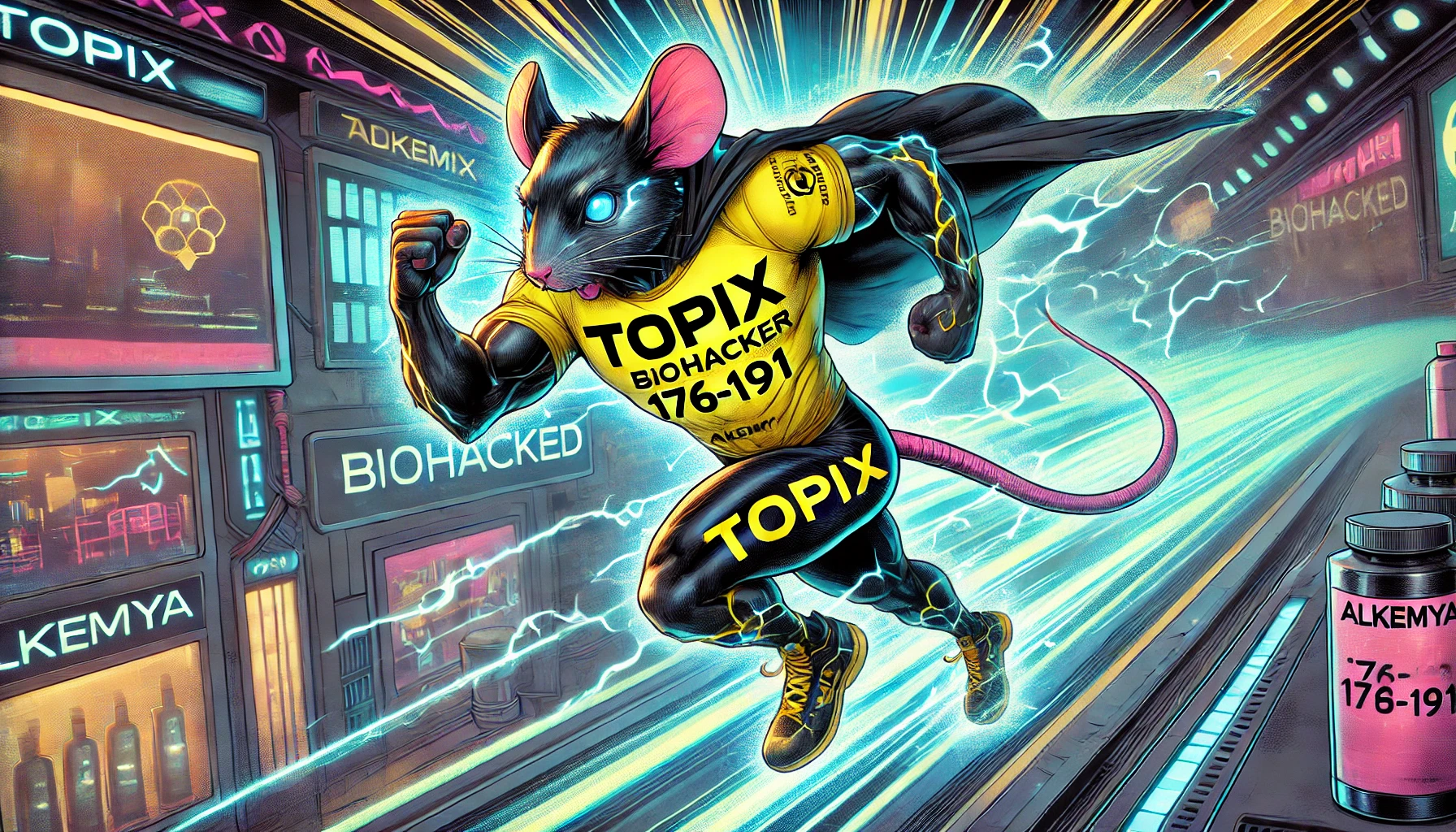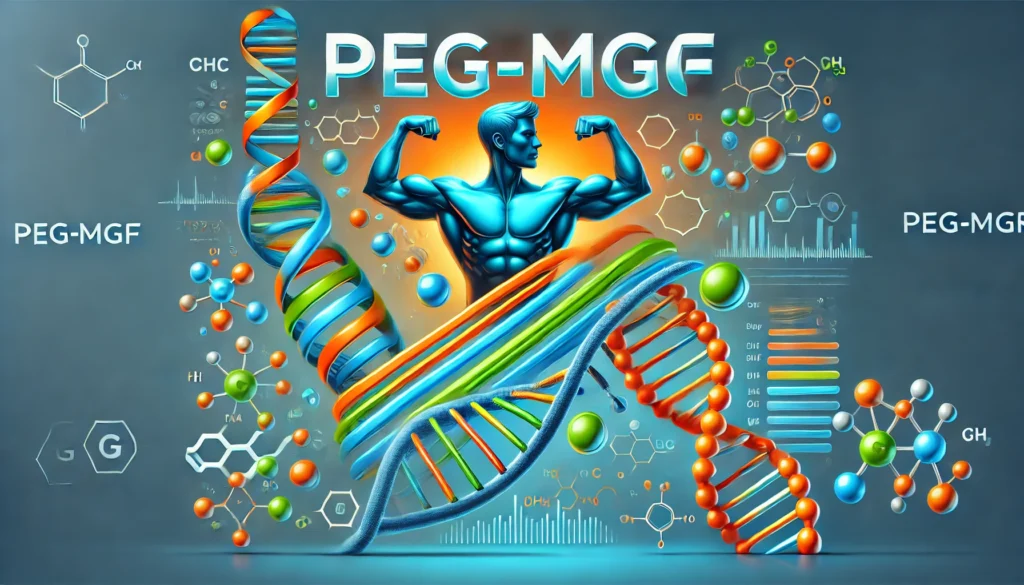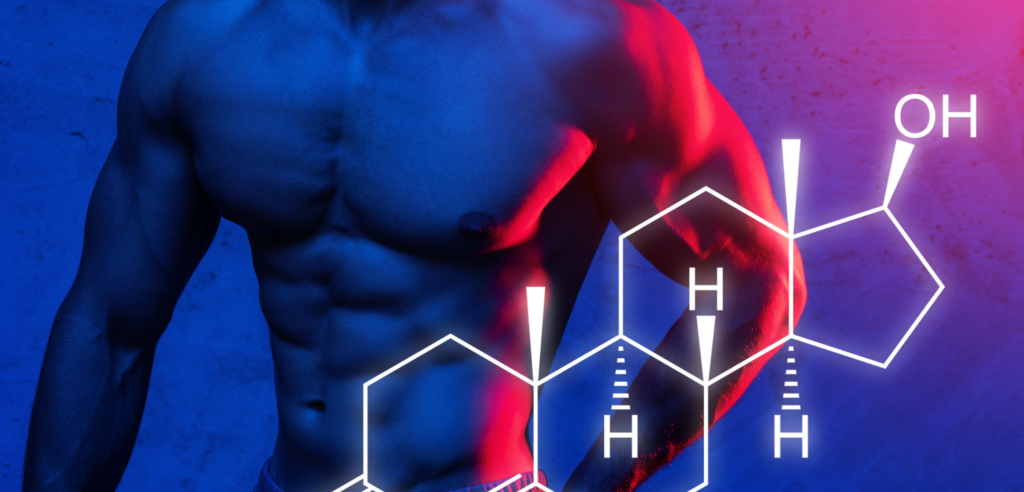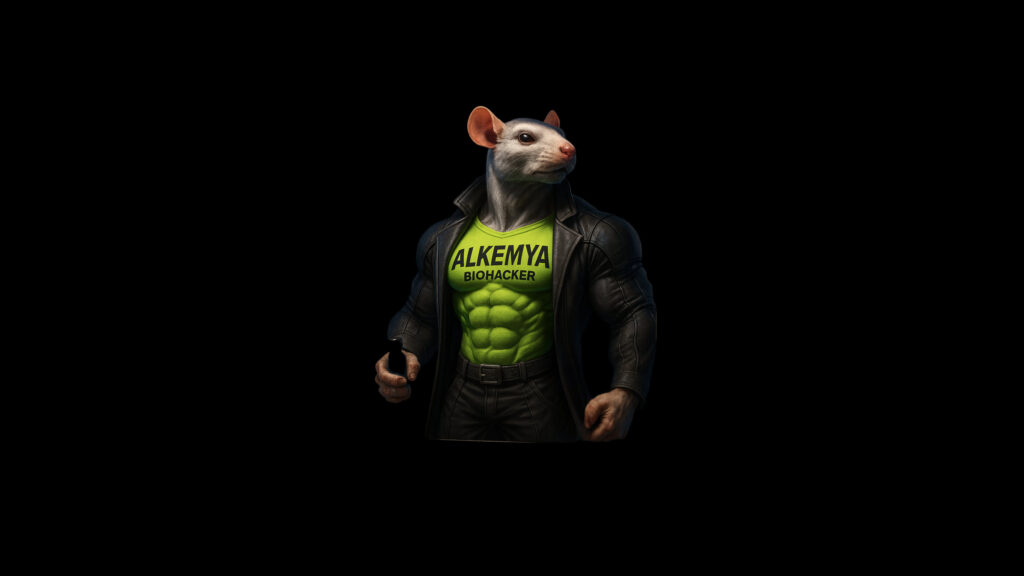Fragment 176-191: The Ultimate Fat-Burning Peptide
Welcome to the Alkemyalabs blog!
If you’ve landed here, chances are you’re looking for innovative solutions for weight management, anti-aging, or overall performance enhancement.
Or maybe you’re just curious to understand why so many are talking about a specific “piece” of the human growth hormone (HGH).
Today, we’re diving deep into Fragment 176-191, a peptide that has captured the attention of doctors, biohackers, and athletes alike.
Get ready—there’s a lot to unpack about this fragment of HGH and its promising applications.
Introduction: What Is Fragment 176-191?
Fragment 176-191, also known as HGH Frag 176-191 or simply Frag 176-191, is a specific section of the human growth hormone molecule (HGH).
This fragment lies near the terminal region of the HGH chain, covering amino acids 176 to 191.
Why did researchers focus on this exact segment?
Because they noticed this part of the hormone plays a crucial role in fat metabolism—without triggering many of the common side effects associated with full-length HGH, such as elevated IGF-1 levels or bone growth stimulation.
Fragment 176-191 is not a full hormone—it’s a peptide.
But it has earned its reputation for its ability to:
Promote lipolysis (fat breakdown)
Inhibit lipogenesis (formation of new fat tissue)
- Support physical recovery and overall well-being
That’s why it’s been under the radar of sports doctors, anti-aging experts, and biohackers for years—and more recently, it’s started to be integrated into targeted protocols.
However, a necessary disclaimer: research on Fragment 176-191 is still ongoing.
While the existing data is promising, it remains a compound that should be approached with professional oversight and a research-oriented mindset.
The Discovery and History of Fragment 176-191
Human growth hormone (HGH) has been a central focus of medical and scientific research for decades.
Initially used to treat GH deficiency in children and adults, the scientific community soon turned its attention to the internal mechanics of the HGH molecule—trying to isolate the specific regions responsible for distinct physiological effects.
The First Studies
The first studies isolating the 176-191 region of HGH date back to the 1970s and 1980s, when researchers realized that not all of the HGH molecule was needed to induce specific metabolic outcomes.
In fact, the 176-191 segment appeared to be the main driver of fat metabolism regulation.
The big question became:
Could this fragment alone deliver the benefits of HGH without triggering the undesired effects?
Like widespread growth stimulation, water retention, or negative impacts on glucose metabolism?
Development for Clinical and Performance Use
With advances in molecular biology and genetic engineering, scientists were able to synthesize Fragment 176-191 in the lab and test its effects in both animal models and later, in humans.
Early findings showed promising results:
Enhanced lipolysis (fat loss)
Possible reduction in lipogenesis (new fat formation)
Fewer side effects compared to full-length HGH
A curious anecdote—though not always confirmed by official sources—tells of a group of Australian researchers who first conducted trials on obese mice, showing that chronic administration of Fragment 176-191 led to significant bodyweight reduction and abdominal fat loss.
From there, interest in off-label and sports-related use began to rise, with coaches and athletes exploring whether it could become a safer, more targeted alternative to HGH therapies.
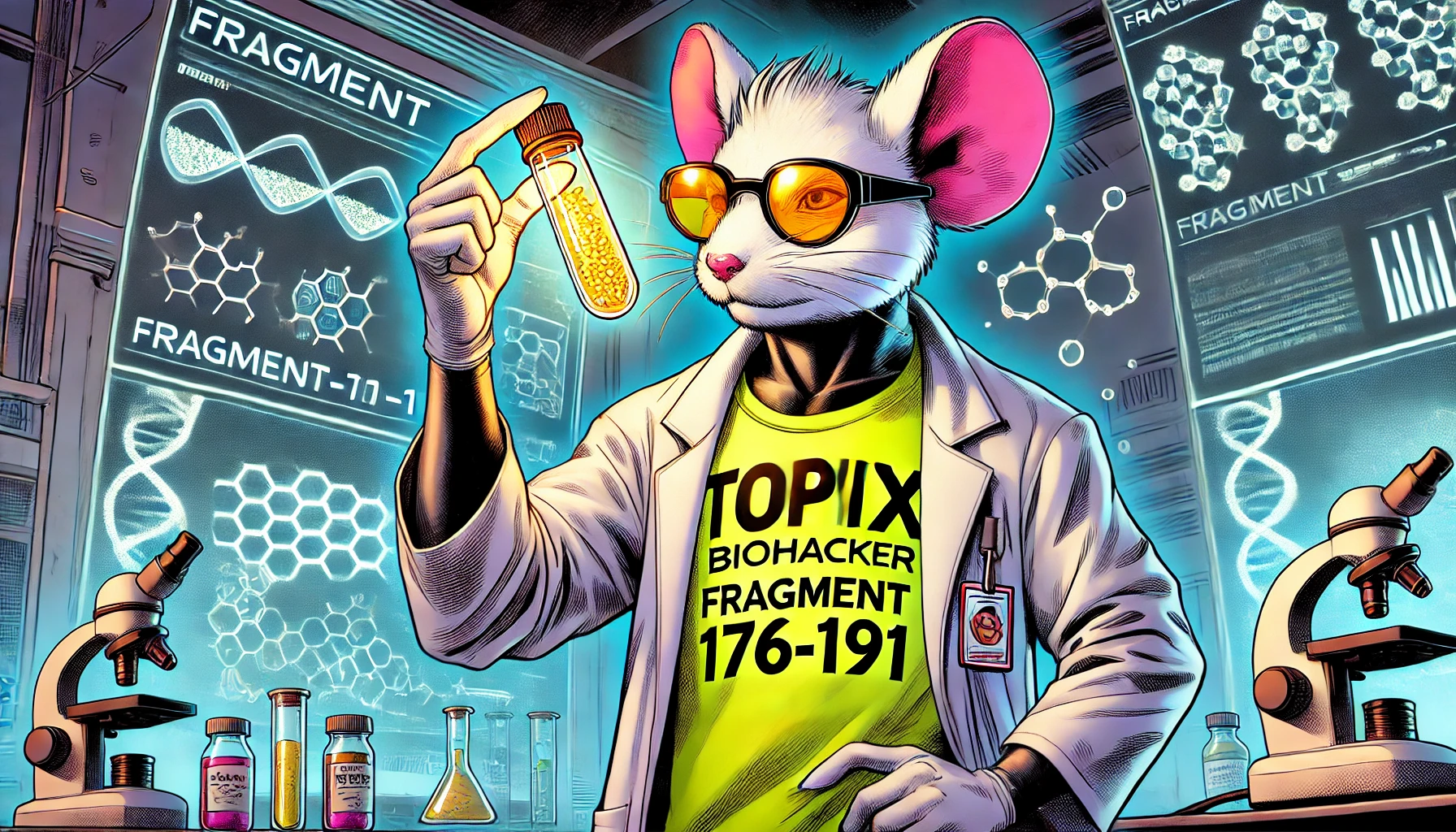
Mechanism of Action: How Fragment 176-191 Works
As mentioned earlier, Fragment 176-191 is derived from the polypeptide chain of human growth hormone (HGH) but doesn’t retain all of its effects.
In simple terms, it’s like isolating the specific “piece” of the hormone responsible for regulating fat metabolism—leaving behind the rest of the molecule, which is involved in a wide range of functions like musculoskeletal growth, IGF-1 secretion, glucose regulation, and more.
Lipolysis vs. Lipogenesis
Fragment 176-191 primarily acts on receptors in adipose tissue, triggering a cellular cascade that results in:
Increased lipolysis – the breakdown of triglycerides into free fatty acids and glycerol, which the body can then use for energy.
Reduced lipogenesis – the synthesis of new fat, particularly in areas like the abdomen.
Several animal studies have reported improvements in metabolic markers, including potential benefits to cholesterol and triglyceride levels.
However, the exact mechanisms are still under investigation.
It is believed that Fragment 176-191 activates certain signaling pathways similar to HGH, but with lower affinity for receptors that typically cause unwanted side effects.
💡 For further reading, search “HGH Fragment 176-191 metabolic effects” on PubMed to find recent studies.
Interaction with GH and IGF-1
One of the most notable advantages of Fragment 176-191 is that it does not appear to significantly increase IGF-1 levels, unlike full-length HGH.
IGF-1 (Insulin-like Growth Factor 1) is a cellular growth mediator that can have positive anabolic effects on muscle mass—but it also carries potential risks due to its role in promoting unwanted cellular proliferation.
This makes Fragment 176-191 a potentially safer alternative for those looking to target fat metabolism specifically, without the concerns associated with overstimulation of abnormal tissue growth.
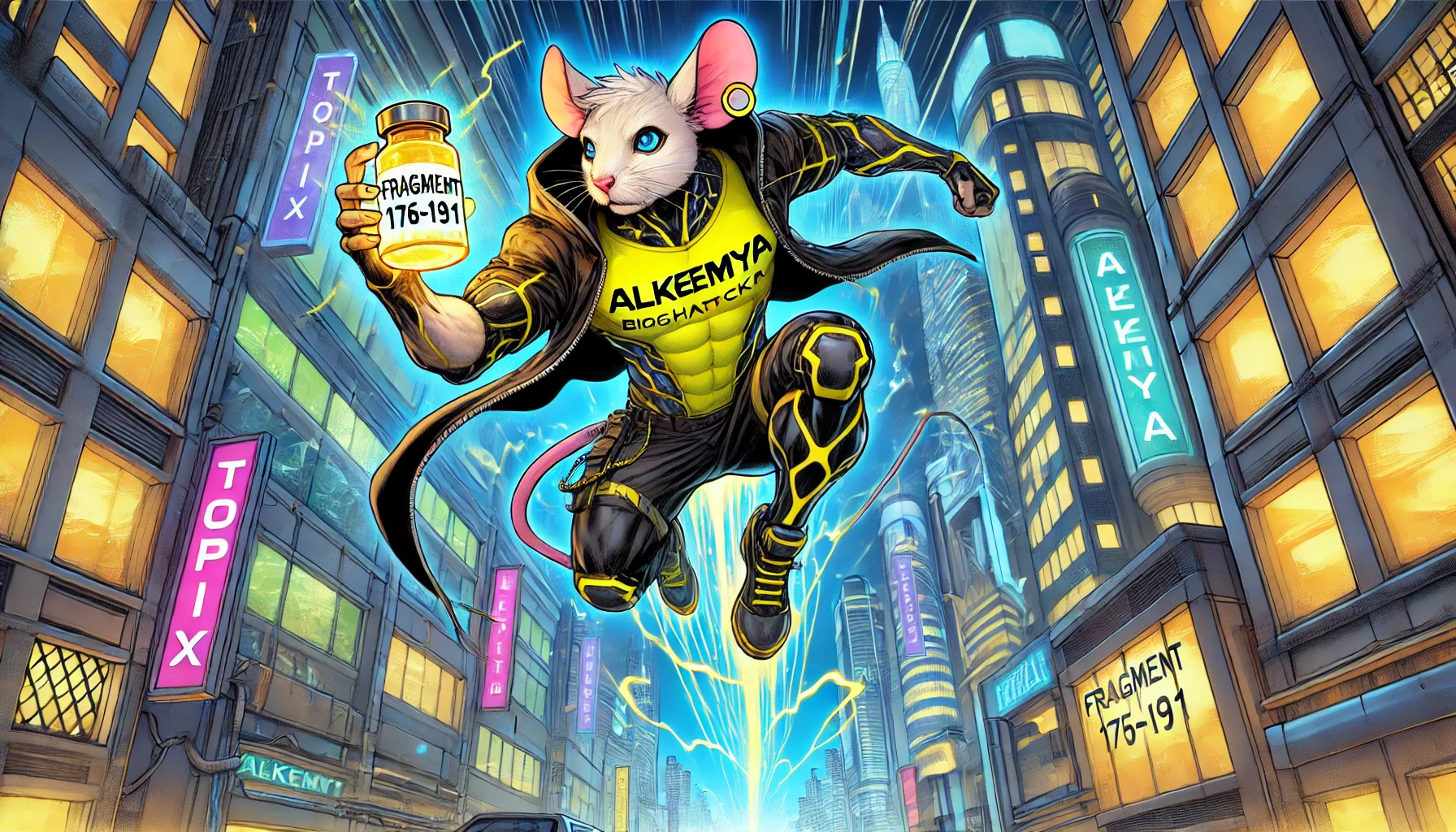
Benefits and Potential Applications
4.1 Fat Loss and Weight Management
The most talked-about advantage of Fragment 176-191 is its ability to support fat loss, particularly when combined with a healthy lifestyle (balanced diet, regular exercise, proper sleep).
Users who include it in targeted protocols often report:
Reduction in abdominal and visceral fat
Improved muscle definition, especially with regular physical activity
Better long-term weight control
It’s important to clarify: Fragment 176-191 is not a magic solution. It works best in synergy with proper nutrition and training.
Those expecting dramatic fat loss just from peptide injections—without changing anything in their habits—are likely to be disappointed.
4.2 Overall Wellness and Recovery
While its primary effect lies in fat metabolism, some users and researchers have also observed:
Increased daily energy and vitality, possibly related to improved body composition
Enhanced muscle recovery, although less significant than with full HGH
Potential immune support, still under investigation, possibly linked to hormonal balance and lower inflammation due to fat reduction
4.3 Other Areas of Research
Preliminary studies are exploring possible effects of Fragment 176-191 on:
Glucose metabolism regulation – may assist in maintaining stable blood sugar levels
Insulin resistance modulation, especially in cases related to overweight and obesity
That said, its main use case remains fat loss and body composition improvement.
Other applications are still under scientific scrutiny or based on anecdotal evidence.
Available Formats: Injectable Vials (What About Creams?)
At present, the most common form of Fragment 176-191 is injectable.
It’s typically supplied in vials containing lyophilized powder, which must be reconstituted with bacteriostatic (or sterile saline) water for subcutaneous administration.
Subcutaneous injection is usually recommended in the abdominal area, or other regions with higher fat concentration.
And what about creams?
Unlike some other peptides (like GHK-Cu, which we’ve covered previously), topical use of Fragment 176-191 is not yet widespread.
Since its target is deep adipose tissue, subcutaneous injection remains the most direct and effective delivery method.
Topical or transdermal formulations may emerge in the future, but for now, injection is the standard among clinicians and advanced users.
Usage Protocol: Dosage, Duration, and Method
Important Disclaimer
The following content is not medical advice, but a summary of protocols referenced in literature and by some professionals and biohackers.
Always consult a qualified medical professional before starting any new protocol.
Typical Dosage
Literature and biohacking forums report varying dosages, but the most common include:
500 mcg per day, taken once daily
– usually before bedtime, at least 4 hours after the last meal
– or first thing in the morning, followed by a fasting window of 4+ hoursA more advanced protocol uses 1,000 mcg (1 mg) per day, split into two daily injections, still respecting fasting timing
Frequency and Timing
Most users follow daily administration for 8 to 12 weeks, depending on their goals.
Some adopt a 5 days on / 2 days off pattern to avoid receptor saturation, though there are no strict universal guidelines.
Optimal timing is either first thing in the morning (fasted) or before bedtime, to align with fat-burning phases during fasting and sleep.
Injection Method
Use an insulin syringe to draw the reconstituted solution from the vial
Administer subcutaneously in the abdominal area
Rotate injection sites to minimize local irritation
Synergies and Stacking
Many biohackers and bodybuilders stack Fragment 176-191 with:
GHRPs or other growth hormone secretagogues to maximize fat-burning and recovery effects
Low-carb or ketogenic diets, to boost lipolysis and metabolic adaptation
Support supplements (BCAAs, proteins, essential fatty acids) depending on their nutritional plan
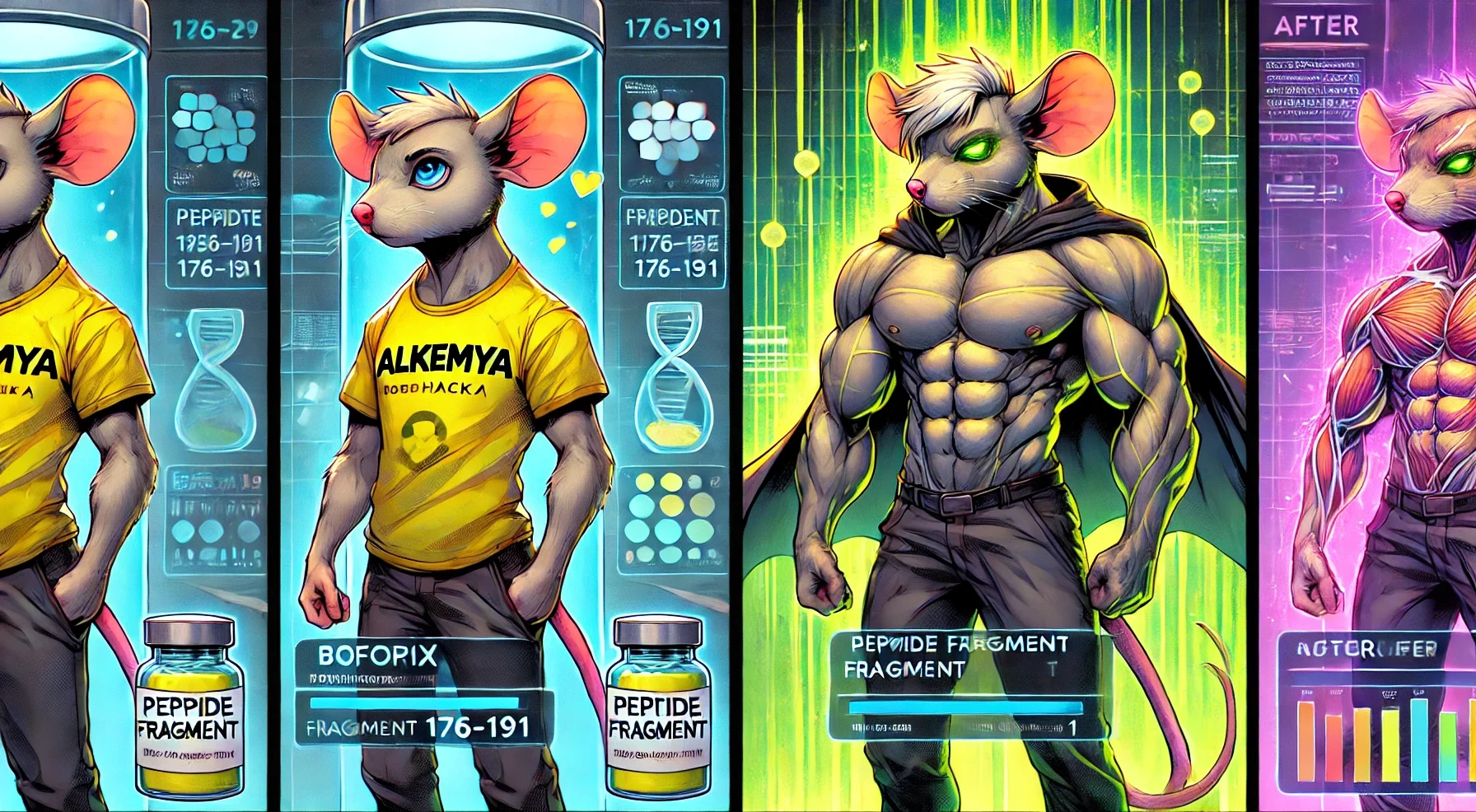
Side Effects and Safety
General Safety
Fragment 176-191 is generally considered well tolerated, especially when compared to full-length HGH.
Since it acts on a narrower range of biological pathways, it is associated with fewer side effects, such as:
Water retention
Swelling in the extremities
Unwanted elevation of IGF-1
Significant hypoglycemia
However, “well tolerated” doesn’t mean completely free from potential adverse effects.
Possible Side Effects
Injection site irritation or redness – common with any injectable peptide; usually limited to mild, temporary swelling or stinging.
Nausea or headache – some users report mild nausea, particularly when injected on an empty stomach.
Temporary blood sugar drop – while not as pronounced as with HGH, Fragment 176-191 may affect glucose metabolism in sensitive individuals.
Fatigue or drowsiness – reported by some, potentially linked to hormonal shifts or metabolic adaptation.
Contraindications
Serious medical conditions – individuals with chronic, autoimmune, or cancer-related illnesses should consult a physician.
Pregnancy and breastfeeding – insufficient data is available; use is not recommended.
Medication interactions – those taking drugs for diabetes, endocrine disorders, etc., should assess risks with their healthcare provider.
Frequently Asked Questions (FAQ)
1. Can Fragment 176-191 replace diet and exercise for fat loss?
Absolutely not. As previously stated, it works best when combined with a healthy lifestyle. There are no miracle shortcuts.
2. How long does it take to see results?
Visible changes may occur within 4–5 weeks, but results vary depending on diet, training, and individual factors. Some users report noticeable abdominal fat loss within the first month.
3. Can I use Fragment 176-191 if I’m already on HGH or other peptides?
Some users combine Fragment 176-191 with other peptides or even HGH, but this must be done cautiously and under medical supervision. Hormonal interactions can be complex.
4. Is it legal to buy and use Fragment 176-191?
Regulations vary by country. In many places, it is sold for research use only. Always check your local laws before purchasing or using it.
5. Why isn’t there a common topical (cream) version of Fragment 176-191?
Fragment 176-191 targets deep adipose tissue receptors, and transdermal delivery may not be as effective as subcutaneous injection.
However, skin-delivery technologies are evolving, and topical versions may emerge in the future.
Anecdotes and Curiosities: Stories Behind Fragment 176-191
The “jacked mice” experiment:
A nearly legendary story claims that Australian researchers tested Fragment 176-191 on already trained mice to see if fat loss would be even more pronounced. Reportedly, the “muscular mice” showed faster fat reduction and improved definition compared to the control group, with identical diets and activity.The bodybuilding cameo:
Fragment 176-191 gained early fame in bodybuilding circles before mainstream science caught up. For a time, photos of athletes showcasing jaw-dropping transformations were attributed to this peptide. Of course, not all images online are trustworthy—but the hype helped build its “legendary” reputation.The safety myth:
Some people believe that because it’s “just a fragment of GH,” Fragment 176-191 must be risk-free. In reality, any bioactive compound carries potential side effects, especially if dosed improperly.
Scientific References and Further Reading
Here are a few useful links (mainly via PubMed) for those interested in the more technical aspects or the scientific basis of Fragment 176-191:
- Study on the lipolytic potential of Fragment 176-191
(A foundational paper analyzing the fat-metabolism effects of specific HGH fragments) - Fragment 176-191 in obese mice
(A study showing fat loss and lipid profile improvements) - Review on therapeutic applications of HGH and its fragments
(An overview of medical and experimental uses of GH and related peptides) Metabolic effects of HGH vs. fragments
(Explains how different HGH segments exert distinct biological actions)
Note: Links are for research purposes only. Some articles may require institutional access or subscriptions.
Conclusion: The Future of Fragment 176-191
Fragment 176-191 is a prime example of how research can isolate specific functional segments of a complex hormone like HGH—retaining the benefits while minimizing (but not eliminating) risks.
For those looking to improve body composition or reduce stubborn fat, it could become a powerful tool—especially when integrated into a holistic strategy involving balanced nutrition, physical training, and recovery.
Looking ahead, we may see:
More stable, user-friendly formulations
Expanded research into broader metabolic effects (e.g., glucose, insulin, lipids)
Potential medical applications in obesity or metabolic syndrome, if long-term safety is demonstrated
In the meantime, if you’re interested in trying Fragment 176-191, visit our Alkemyalabs shop, where you’ll find the injectable (lyophilized powder) version, along with detailed guides on how to store and reconstitute it properly.
Always consult a qualified professional before use. Safe and personalized protocols make all the difference.
